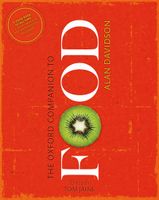Advertisement
Keshkul-e-Fuqara
Appears in
Published 2014
The name of this rich milk and almond pudding, which is flavoured with rosewater, ironically means ‘beggars’ bowl’. There are many variations of the same dessert found all over Iran and the Middle East, and in Afghanistan.
Keshkul is the Persian word for an oval bowl made either of wood, metal, or coconut—or the very valuable coco de mer. These bowls were carried suspended by a chain from the shoulder by paupers or beggars called fuqara (the plural of faqir).
Faqirs, who called themselves ‘the paupers of God’, travelled from house to house begging for food. Donations of food (and sometimes money, although the faqir could not ask for money directly) were placed in the keshkul which would eventually be filled up with different kinds of food. Hence the name of this dessert—it is sprinkled and decorated with various blanched nuts (almond, pistachio) and coconut, symbolizing the keshkul being filled with a variety of food.


